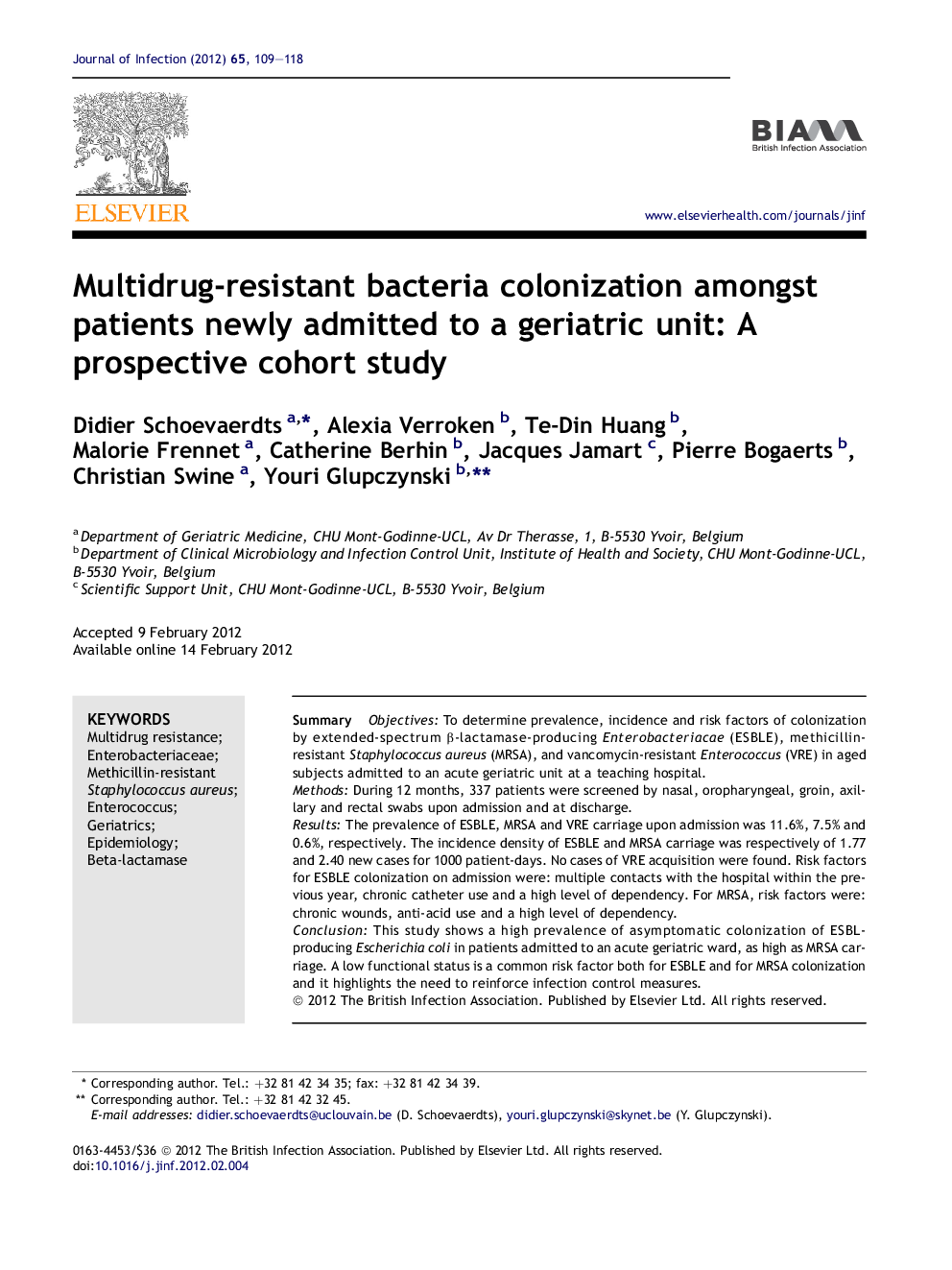| Article ID | Journal | Published Year | Pages | File Type |
|---|---|---|---|---|
| 3374749 | Journal of Infection | 2012 | 10 Pages |
SummaryObjectivesTo determine prevalence, incidence and risk factors of colonization by extended-spectrum β-lactamase-producing Enterobacteriacae (ESBLE), methicillin-resistant Staphylococcus aureus (MRSA), and vancomycin-resistant Enterococcus (VRE) in aged subjects admitted to an acute geriatric unit at a teaching hospital.MethodsDuring 12 months, 337 patients were screened by nasal, oropharyngeal, groin, axillary and rectal swabs upon admission and at discharge.ResultsThe prevalence of ESBLE, MRSA and VRE carriage upon admission was 11.6%, 7.5% and 0.6%, respectively. The incidence density of ESBLE and MRSA carriage was respectively of 1.77 and 2.40 new cases for 1000 patient-days. No cases of VRE acquisition were found. Risk factors for ESBLE colonization on admission were: multiple contacts with the hospital within the previous year, chronic catheter use and a high level of dependency. For MRSA, risk factors were: chronic wounds, anti-acid use and a high level of dependency.ConclusionThis study shows a high prevalence of asymptomatic colonization of ESBL-producing Escherichia coli in patients admitted to an acute geriatric ward, as high as MRSA carriage. A low functional status is a common risk factor both for ESBLE and for MRSA colonization and it highlights the need to reinforce infection control measures.
